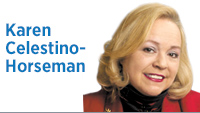Subscriber Benefit
As a subscriber you can listen to articles at work, in the car, or while you work out. Subscribe Now Former president and Republican candidate Donald J. Trump was convicted of 34 counts, in part for conspiring to falsify business records to hide the payment of hush money to Stormy Daniels for the intended purpose of committing or concealing another crime.
Former president and Republican candidate Donald J. Trump was convicted of 34 counts, in part for conspiring to falsify business records to hide the payment of hush money to Stormy Daniels for the intended purpose of committing or concealing another crime.
The “other crimes” were violations of federal campaign finance laws that required corporate monies paid on behalf of Trump to be disclosed as campaign contributions, and that concealment of the payments was a violation of New York election law prohibiting conspiracy with another to promote or prevent an election and a violation of New York tax law prohibiting the submission of false or fraudulent information in a tax-return-related document. The reason Trump wanted to conceal the payoff was that he was running for president.
As an attorney, I became fascinated by the trial. Post-trial, some intentionally false communications need to be exposed.
◗ Judge Juan Merchan had no conflict. He donated a total of $35 to President Biden and another group supporting Democrats, and his daughter works for Democratic campaigns outside of New York. Shortly after drawing the case, Merchan asked for an opinion from the New York Advisory Committee on Judicial Ethics as to whether he was obligated to disclose this information and/or withdraw from the case.
The committee issued an opinion that concluded he was not ethically conflicted and therefore was not required to disclose or withdraw. The opinion was known to Trump’s attorneys, but that did not stop them from continuing to argue that Merchan should recuse himself.
◗ Merchan scheduled the sentencing hearing for four days before the Republican National Convention. A gap between the trial and sentencing is typical unless the defendant agrees to waive the pre-sentence report. Trump didn’t. In New York, the probation department prepares the report by interviewing various persons, including the defendant and his attorneys, and reviewing the defendant’s history. Once the report is prepared, it is sent to the judge to review. Probation does all pre-sentence reports for all NYC defendants. The process takes time.
◗ Merchan is a New York state court judge presiding over a case being prosecuted by the New York County district attorney. The federal government, including the Biden administration and the U.S. Department of Justice, had nothing to do with the prosecution of the case.
◗ Merchan did treat Trump differently than other defendants—Trump was treated better. If any other defendant had violated a gag order multiple times, he would have not only been held in contempt but also put in jail. That did not happen to Trump.
◗ Merchan allowed the use of jury instructions that were 55 pages long. That is not surprising given the trial lasted six weeks and involved 34 counts. The margins of the jury instructions are very wide, the type is double-spaced, and many pages are not full.
◗ Merchan ruled that the indictment was sufficient to apprise Trump of the “other crimes” under consideration. When the indictments were filed, the state also filed a statement of facts supporting the indictment. Further, in response to Trump’s motion, the state set out the specific laws involved in the “other crimes.”
Trump might prevail on appeal, but it’s unlikely the appeals process will be completed before the November election. This means if he wins, America will have elected its first convicted felon as president. There is no law to prohibit a convicted felon from serving as president, so even if his conviction is affirmed, he can continue to serve as president.•
__________
Celestino-Horseman is an Indianapolis attorney. Send comments to ibjedit@ibj.com.
Click here for more Forefront columns.
Please enable JavaScript to view this content.
